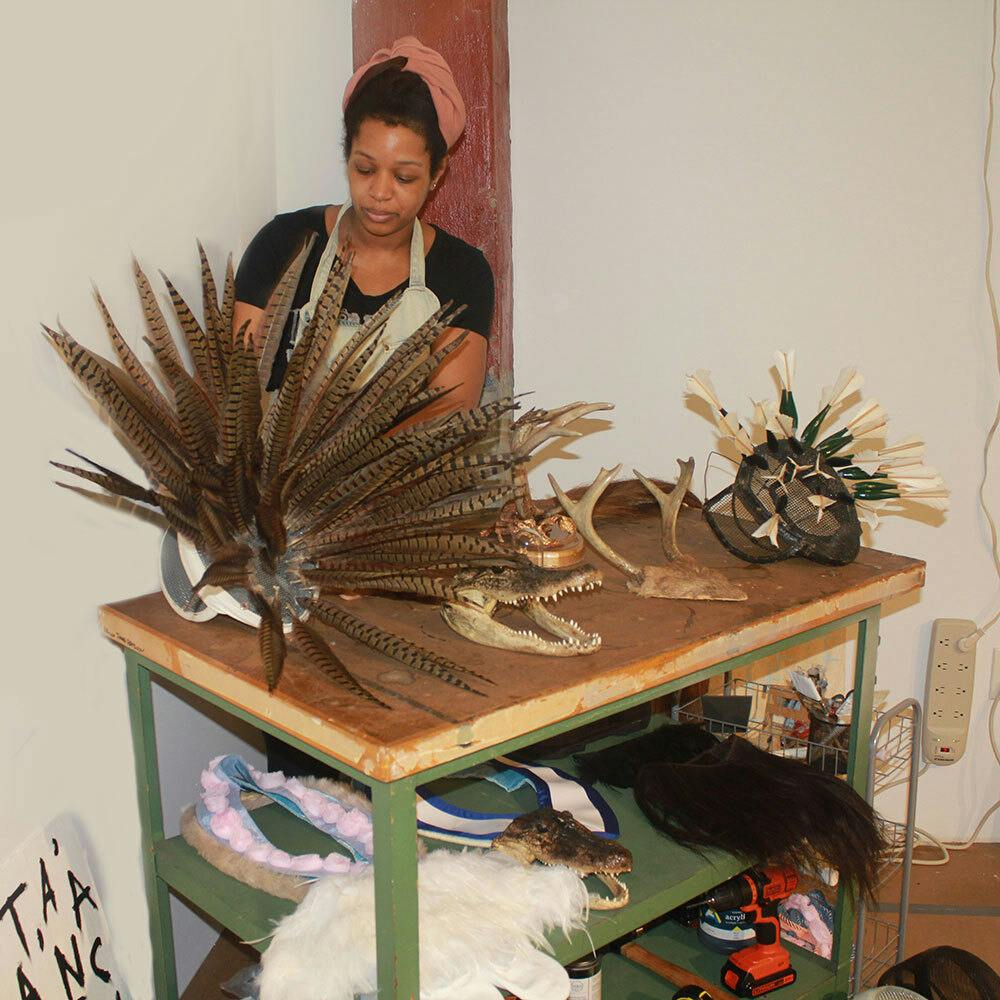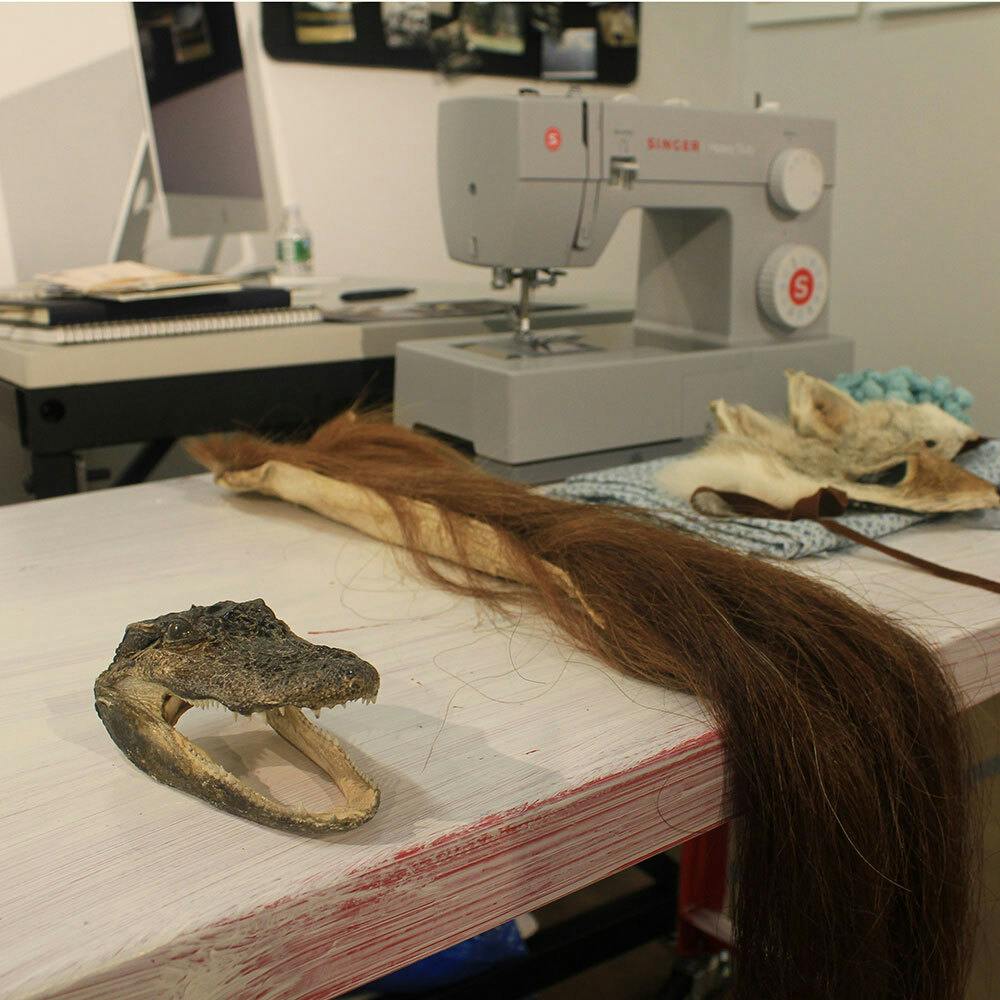Studio Visit: Allison Janae Hamilton


Allison Janae Hamilton is in the early stages of creating work for the culminating exhibition of her residency at the Studio Museum. Now six months into her residency, the artist reflects on how Harlem has influenced her views on migration and the impact of landscapes on human life: “Working in Harlem, you really get a sense for the way the Great Migration has shaped Black experience and the way space operates not only in a rural setting but in [an urban] setting.”
Hamilton was raised in Florida and has family rooted in both Tennessee and South Carolina. From the everglades to the pines and flatlands of Tennessee, these locations and her upbringing there gave her a keen awareness of different landscapes. Memories from her childhood occupy a central role in Hamilton’s practice. Alligator heads, skins from various animals associated with the South, and her bronzed childhood shoes (a regular Black southern practice), all pay homage to her upbringing and serve as narrative elements to guide viewers through her installations.
By using photography, video, taxidermy, and other animal artifacts in her installations, Hamilton evokes the American South and the devastating effects of human intervention, including climate change. Her intent is to focus on the relationship between Black communities and the environment, particularly how these communities are often the most negatively impacted by natural disasters. “I’m not trying to present a historic project. I’m more interested in how the history of landscapes is tied to people’s lives and with that comes the good, bad, and ugly.”
Hamilton’s imagery draws from magical realist and Southern Gothic elements. For instance, human figures with animal heads or masks inhabit desolate and eerie environments. “My art work has a lot of dreamlike or surreal elements because history is not something you can fully grasp,” says Hamilton. “That is my way of having the viewer a little destabilized.”
Stay tuned for more information about the Artist-in-Residence exhibition slated to open in spring 2019.
—Kima Hibbert

